Signal Hill
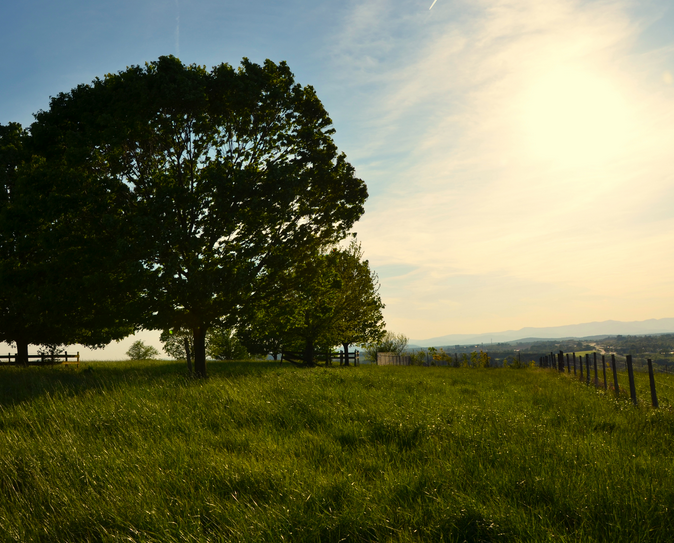
Clark Hall is the local historian for matters about the War Between the States, much of which happened right here in Culpeper. He has documented the astonishing amount of violence that happened in the tranquil rolling hills around Refuge Farm. I am traveling today and am going to borrow his words about the place I now call home, and where I will be spending a lot of the time left to me in this world.
It is a nice place. Peaceful. But in addition to being a magnate for Soviet ICBMs when the Federal Reserve was located just up the lane, this place attracted armies.
Clark notes that the Civil War came to Culpeper in February of 1862- the first full year of mass carnage in North America. General Joseph Johnston’s Confederate army transferred into the County from their prior defensive lodgment on the banks of the Bull Run in Prince William County.
From that point onward, Mount Pony was utilized almost continuously as a signal station by both armies for the rest of this long and brutal war. At 791 feet in elevation, Mount Pony is of course not the tallest peak in Culpeper—that claim is held by Bald Mountain at 980 feet way out in the Gourdvine Neck.
So, not being the largest Culpeper peak, why did Mount Pony become the most important military signal station in the entire Civil War? As a real estate professional might today respond, the key to its military significance rests in Mount Pony’s, “Location, location, location…”
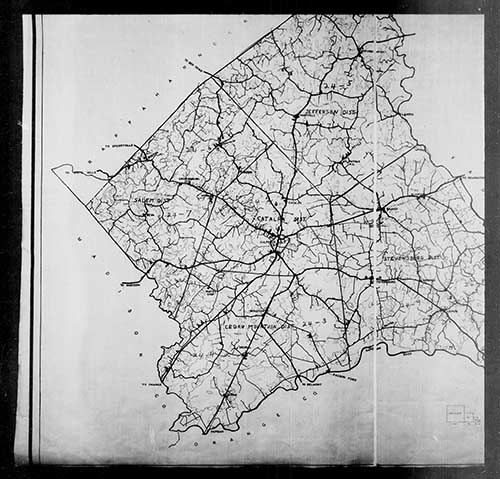
As a large map of Culpeper County is unfolded, one discerns a triangular mass of land shaped somewhat like a piece of pie. At the top edge of the pie piece, the Rappahannock River courses southeast. The Rapidan River delineates the bottom slit of the pie wedge, and this waterway tracks in a northeastern direction to where it converges at the point with the Rappahannock, near Culpeper’s eastern border. At the rear of the “pie piece,” rests the piecrust, to wit, the lofty summits at Culpeper’s western border leading up to the Blue Ridge Mountains.
Now with this local geography lesson in mind, gaze back upon your map. One thereupon observes a mile and a half-long ridge situated in the lower center of the county that tracks east-west fronting and overlooking the flat approaches, north and south, leading up from the Rappahannock and Rapidan Rivers. Not quite equidistant from both rivers (but close), Mount Pony lies ten miles from the former and six miles from the Rapidan. Vigilant Signal Hill scouts could and would immediately discover any army deploying in Culpeper from the usual north-south river approaches.
Adding to the ridge’s preeminent topographical significance, the major east- west road of the day (Kirtley’s Rolling Road, Rt. 3) defines Mount Pony’s northern base and the principal north-south road of the era—the Carolina Road, present-day Rt. 663—intersects with Kirtley’s at the important wartime village of Stevensburg, just beyond the ridge’s eastern slope .
Last, but not least, Mount Pony directly overlooks the shire town of Culpeper County, as well as the vital wartime Orange and Alexandria Railroad, just to the west of the summit.
In point of fact, Mount Pony, or Signal Hill, became the signal station most often utilized, for a greater duration of time during the Civil War than any similar signal position in any theater of action simply because the ridge was in the right place at the right time.
Indeed: location, location, location…
We’ll leave the last word on this rumination to a signalman from Maine, a sergeant in the Signal Corps of the Army of the Potomac who wintered atop Mount Pony in 1863-1864:
“Looking back on my frequent service in Culpeper County during the war, I came to love that big old hill we camped on for so long a time. And as many times as we returned there, Signal Hill was to me Culpeper’s most significant mountain.”
And so it is…
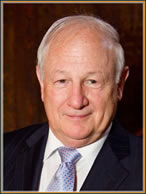
Clark B. Hall, Culpeper Historian .
Copyright Clark Hall 2006
Additional material copyright 2015 Vic Socotra
www.vicsocotra.com
Twitter: @jayare303
The Spy Museum
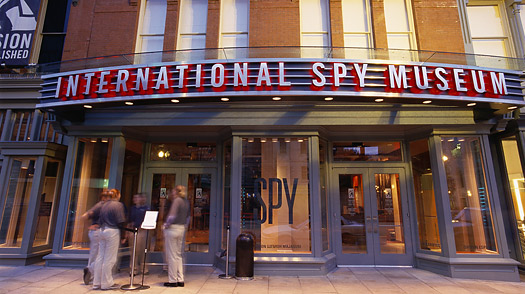
It was too soon to start drinking for Cinco de Mayo, the day I celebrate my Mexican Heritage, so instead I had a couple entertaining hours at The International Spy Museum yesterday- it was a spur of the moment thing. The day was lovely, really no-kidding in the mid-eighties, low humidity, blue skies and a pleasure to be alive.
I am not sure what I think of the museum, since the interactive approach to things dumbs down the content, though I concede it makes it a great deal more approachable. Color me skeptical, just as I appear in the picture.
There were two reasons to visit. The first was that I wanted some context for how a modern museum reaches out to the Great American Public, and the other was that the place will not be there much longer and I wanted to see it as it is. The lease on the building on F Street is going to run out in 2017, and they are going to have to relocate.
The Washington Business Journal reported earlier this month that they are looking at a six-floor building at 900 L’Enfant Plaza, which would keep it in the District proper. I had heard they were also looking at a place in Northern Virginia, but there might be too much competition from the real Spook enclaves on the way to Dulles International. The prospective site at L’Enfant has 100,000 square feet of space, the $100 million facility would triple the special event space the Spies currently have, and add a rooftop terrace, open air plaza, and greatly expanded exhibit space.
That would be useful; the current warren of galleries on the third floor is a little bewildering, but great fun. They mix the myth of the business as depicted by Maxwell Smart and The Man From U.N.C.L.E. pretty well as the metaphor for what the espionage business is really like. The framing device the museum uses to prepare you to wander through the landscape of lies and deceit is a snappy film that features some of the really bad people that hurt us badly. They betrayed their offices and oaths and got people killed: John Walker, Aldrich Ames and Robert Hanssen were the poster children for the craft of treachery.
In retrospect, they all appear to have been in the game for the cash, the basest of motives.
I did not see the allegedly ideological spies: slimeball Jonathon Pollard or the despicable Ana Montez in the montage of spies, but I view them all as more than that. Traitors. But there is a lot of ground to cover in that arena, and appreciate the tyranny of time.
Anyway, the flow of the place was reminiscent of the Holocaust Museum. There, visitors are assigned the name of one of the victims of Nazi atrocities to personalize the experience. At the Spy Museum, you are urged to assume a cover identity for the duration of your visit.
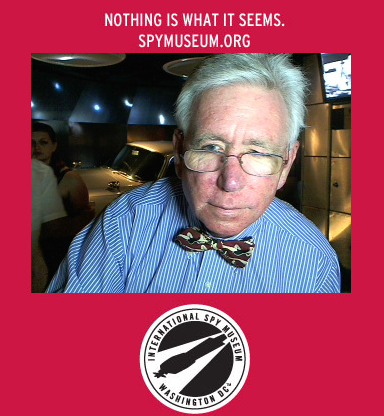
I discovered, to my surprise, that I was actually a 48 year-old ethnic Russian fisherman named Dmitri Ivanov from Kirov, visiting the United States on a five-day family visit to Boston. I tried that on. The last time I visited the Cover office at the Agency was just after the terror attacks. I was preparing for a trip to South Asia to try to persuade two nuclear states not to atomize one another.
I asked the lady behind the counter what identity I should use, and she suggested that I try using mine, which worked. That is the reality of the business, since a real air-tight cover that can withstand scrutiny is a hard bit of work, but not at the Spy Museum.
Upon successfully answering questions about my assumed identity on a flat screen panel, and cleared to “enter the country,” I was assigned a mission to collect a microdot from an attendant at Fenway Park and return with it to Kirov.
The exhibits were entertaining and engaging- like the simulated light table with Digital Globe imagery of the Lingshui airfield on Hainan Island where I was asked to find PRC fighter jets, patrol aircraft and the US Navy EP-3E AIRES II reconnaissance aircraft that was forced down after a collision with a Chinese J-8 (Bort Number 81192), piloted by LCDR Wang Wie. The Chinese pilot did not survive.
That was much closer to what I did than the fake beards and Minox cameras and microphones in shoes. Or dead-drops and bag-swaps and surveillance that make up the tradecraft of espionage conducted in this sprawling capital region. The displays helpfully pointed out that we are infested with more Spooks from more hostile and domestic services than any other city place on earth.
It was all good field-work and preparation to get ready to meet with the other museum later in the week. But that is a thousand miles away, and if I am going to get there, I need to get it in gear today. On the way out of the Spy Museum there was a gallery of exhibits about all the Bond movies. They pointed out that the first of Albert “Cubby” Broccoli’s blockbusters “Dr. No” was released against the backdrop of possible nuclear war with the Soviets.
It all seemed to fit, and the passions of the moment are reflected in all the films. Well, up to now, anyway. We have had to find a suitable villain that isn’t offensive to anyone. I wonder how they are going to do that? The Amish Threat? Homicidal Mormons?
I am sure they will figure something out. They always do.
Copyright 2015 Vic Socotra
www.vicsocotra.com
Twitter: @jayare303
King Under Mountain
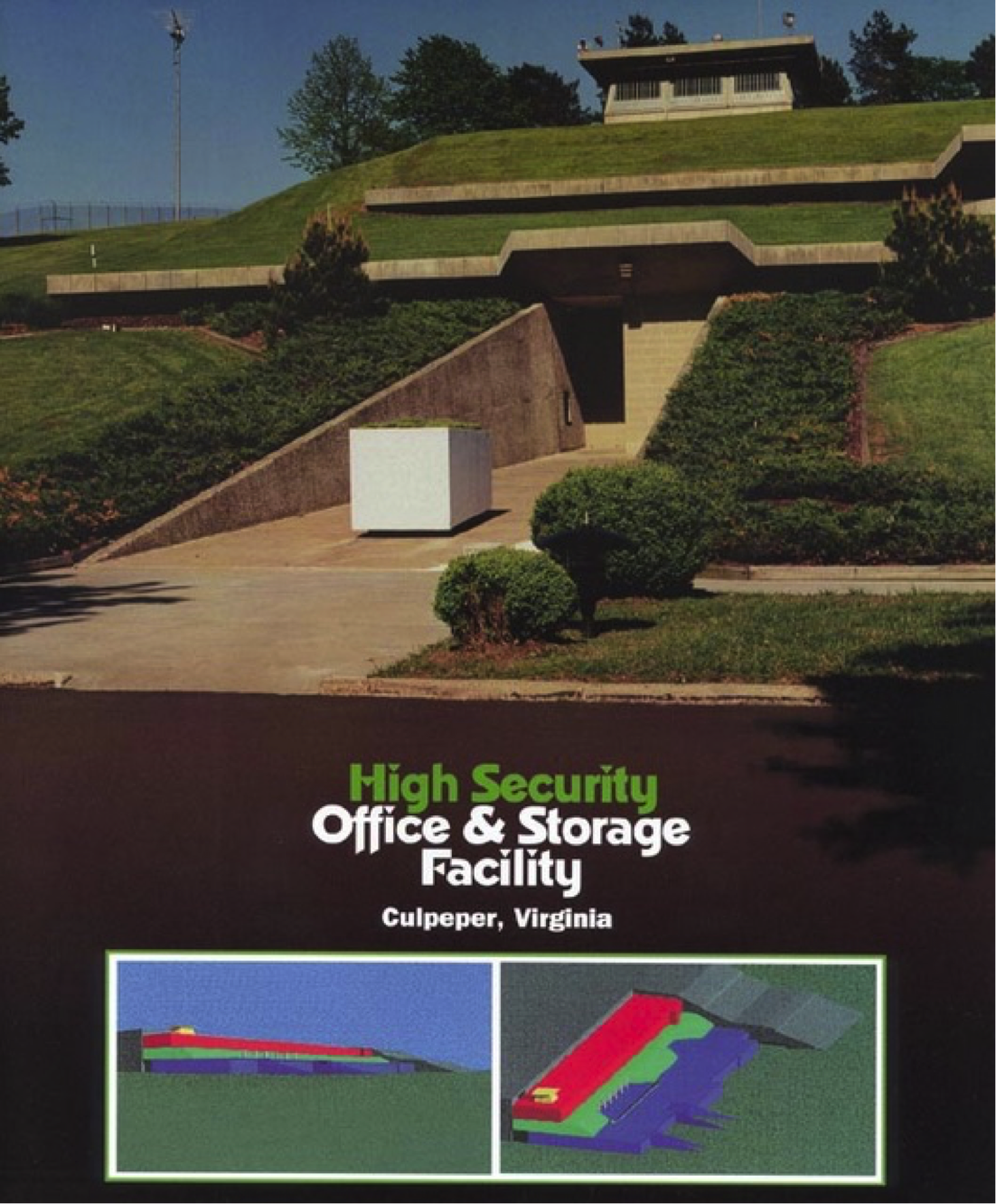
When people come to visit the Farm, they often comment on the modern earth-sheltered structure that looms above the lane at the north end of Mt. Pony. It is the David C. Packard Center for Media Preservation, which I think I have talked about before.
They show restored Hollywood films there every week in a really neat theater with an organ and everything. But that is not what really intrigues me about the mountain.
Mattski gave me an excellent history of the hill, which was used as an observation point and signal station by both Union and Confederate forces during the Late Unpleasantness Between the States, and there is supposed to be some graffiti on private property near the crest. I have not investigated it, nor contacted the owner of the property, but it is on my list, and I will get around to sharing it with you one of these mornings.
I revel in the history of the place, and when I approach Culpeper on Route 3 and see the looming bulk of the east side of the hill, I know I am almost home.
Despite my fascination with the Civil War stuff, the hill is one of the reasons I fell in love with the area. Sure, it is lush and green, and my little place is nestled between two little streams that the EPA wants to regulate. But I ran into something else, long ago, in the very weird days that followed 9/11.
There were plans on the shelf for all sorts of things in the Cold War. Early on, before the precision of Soviet Nukes improved to the point that no bunker, regardless of how deep, was going to provide refuge.
One of the forts of the early Cold War was in Cheyenne Mountain. That is the one that never was a secret- HQ of the North American Air Defense Command, deep under mountain. There were others- the ones around here are called “Undisclosed Locations,” though who they might have been undisclosed to is a mystery to me.
I had a picture of the Shah of Iran making a visit to one of the ones I worked in, taken from the archives in the fort. Certainly the Russians knew about them.
Anyway, I was with some bored White House Staffers one afternoon and they wanted to get out into the daylight. They had me drive the big GM Suburban, and we went looking for other bunkers. There was a Kennedy bunker in Warrenton, and some antenna fields belonging to one of the Agencies that people had half-forgotten about.
It was an interesting afternoon, and since I had been a participant in the Program when they transitioned from hard defense to a road-mobile capability. It was expensive, and the bureaucrats couldn’t wait to dismantle it with the end of the Cold War.
They might want it back, these days, but we were clearing out the Cold War attic, and even some of the forts went on the market. See, every agency had one, to pretend that they could continue to operate amid the radioactive slag. The FAA had one- I was tasked to find one for CDC in Atlanta. The Congress had one at the Greenbrier Resort. And of course the White House has several.
Everyone needed a Fort in the Cold War, and after 9/11 everything old was new again.
That is where we come to Mount Pony, and why the Packard Center was interested in the hills of Culpeper when they were looking for a climate-controlled underground facility to store all that flammable nitrate-based ancient film stock.
The one in Mount Pony was owned by the Federal Reserve. It was- and is- a massive bunker that housed some $4 billion in hard currency as well as the central hub of FedWire, the computer network which allows the nation’s banks to communicate and transfer funds.
Since it went operational in 1969, the operated a 139,800-square-foot radiation-hardened facility inside Mount Pony. The 400-foot-long (122-meter) bunker is built of steel-reinforced concrete 1 foot (0.3 meters) thick. Lead-lined shutters can be dropped to shield the windows of the semi-recessed facility, which is covered by 2 to 4 feet (0.6 to 1.2 meters) of dirt, and surrounded by barbed-wire fences and a guard post. The seven computers at the facility, operated by the Federal Reserve Bank of Richmond, were the central node for the transfer of all American electronic funds.
Until July 1992, the bunker also served as a facility for the ” continuity of government ” (COG). With a peacetime staff of 100, the site was designed to support an emergency staff of 540 for thirty days, but only 200 beds were provided in the men’s and women’s dormitories, which would be shared on a “hot-bunk” basis by the staff, working around the clock.
A pre-planned menu of freeze-dried foods for the first thirty days of occupation was stored on site; private wells would provide uncontaminated water following an attack. Other noteworthy features of the facility were a cold storage area for maintaining bodies that could not be promptly buried (owing to high radiation levels), an incinerator, indoor pistol range, and a helicopter landing pad.
Until 1988, Mount Pony stored several billion dollars worth of currency, including a large number of $2 bills in its 23,500-square-foot (2,186-square-meter) vault, shrink-wrapped and stacked on pallets 9 feet (2.7 meters) high. This money was to be used “to replenish currency supplies east of the Mississippi.”
But the facility wasn’t just for use in the post-apocalyptic future. It was actively used by the Federal Reserve to route and monitor financial transactions from America’s banks throughout the 1970s and 80s. The building was dedicated in December 1969 and by August of the following year it was routing financial transactions between 5,700 banks all around the country. By the mid-1970s it was processing 25,000 messages an hour through the facility’s four computers.
It may have been designed with the apocalypse in mind, but the Fed was going to be damned sure it got its money’s worth during those pre-apocalypse years.
Here are some fun pages from the government’s Culpeper Switch booklet…
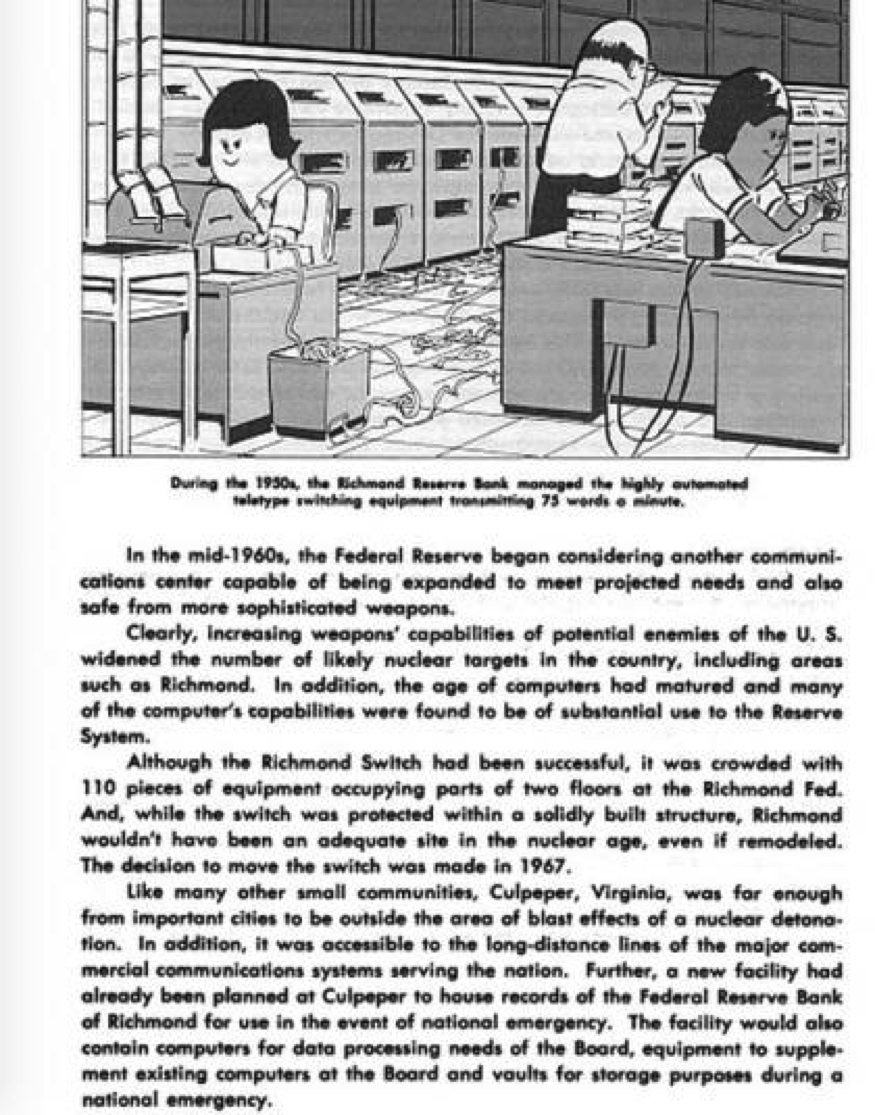
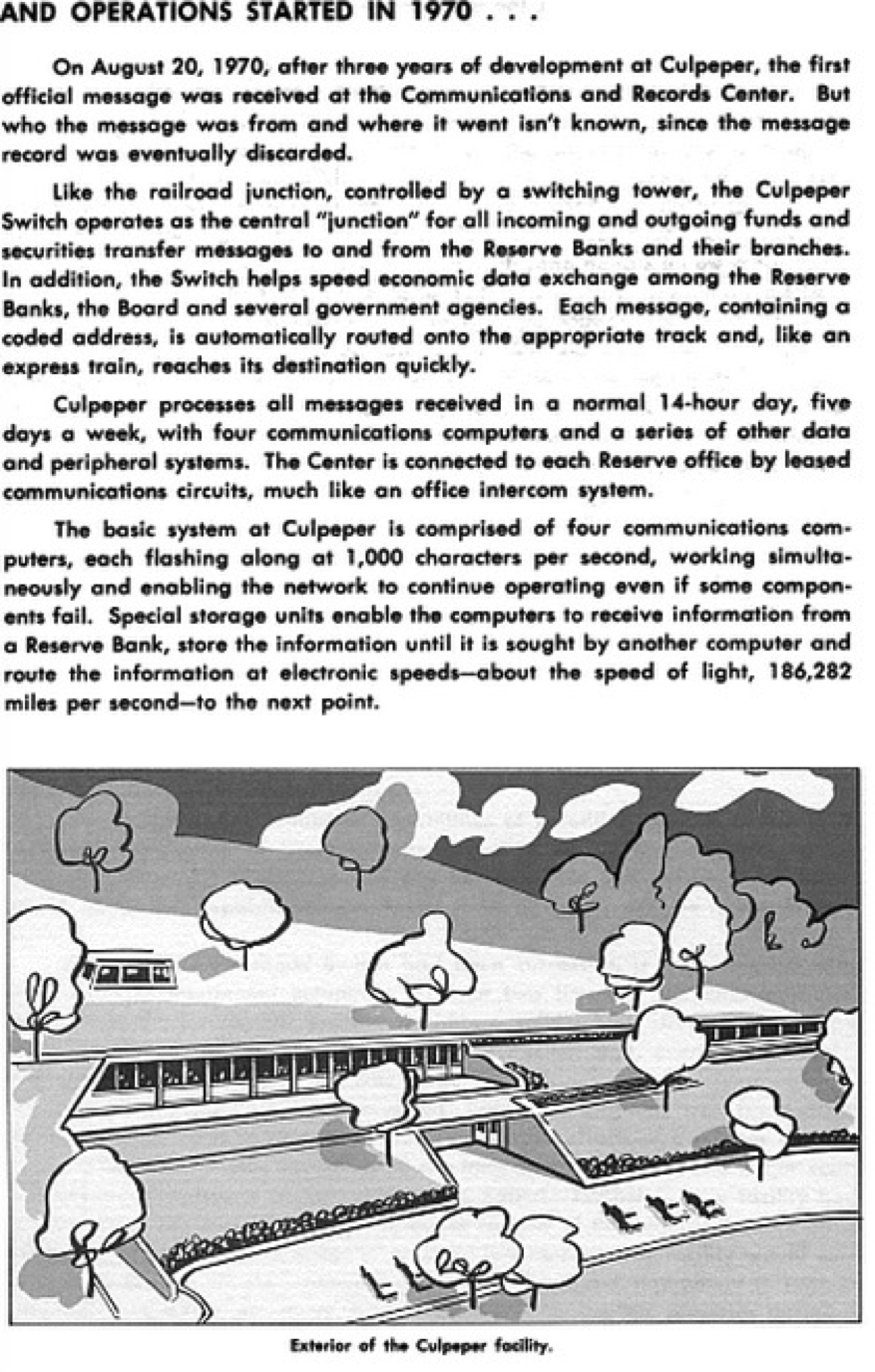
…and here are the floor plans…
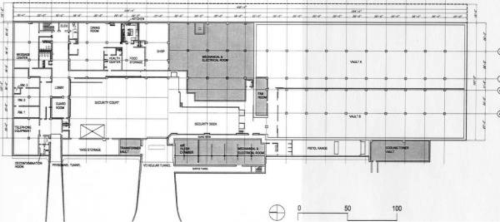
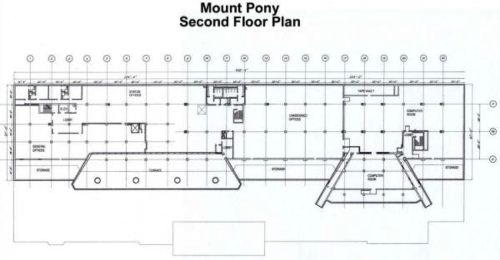
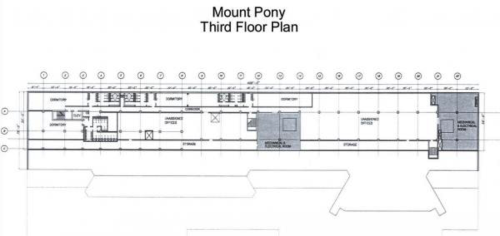
Once the Soviet threat had passed, the government attempted to sell the facility. Here are the visuals from the brochure:
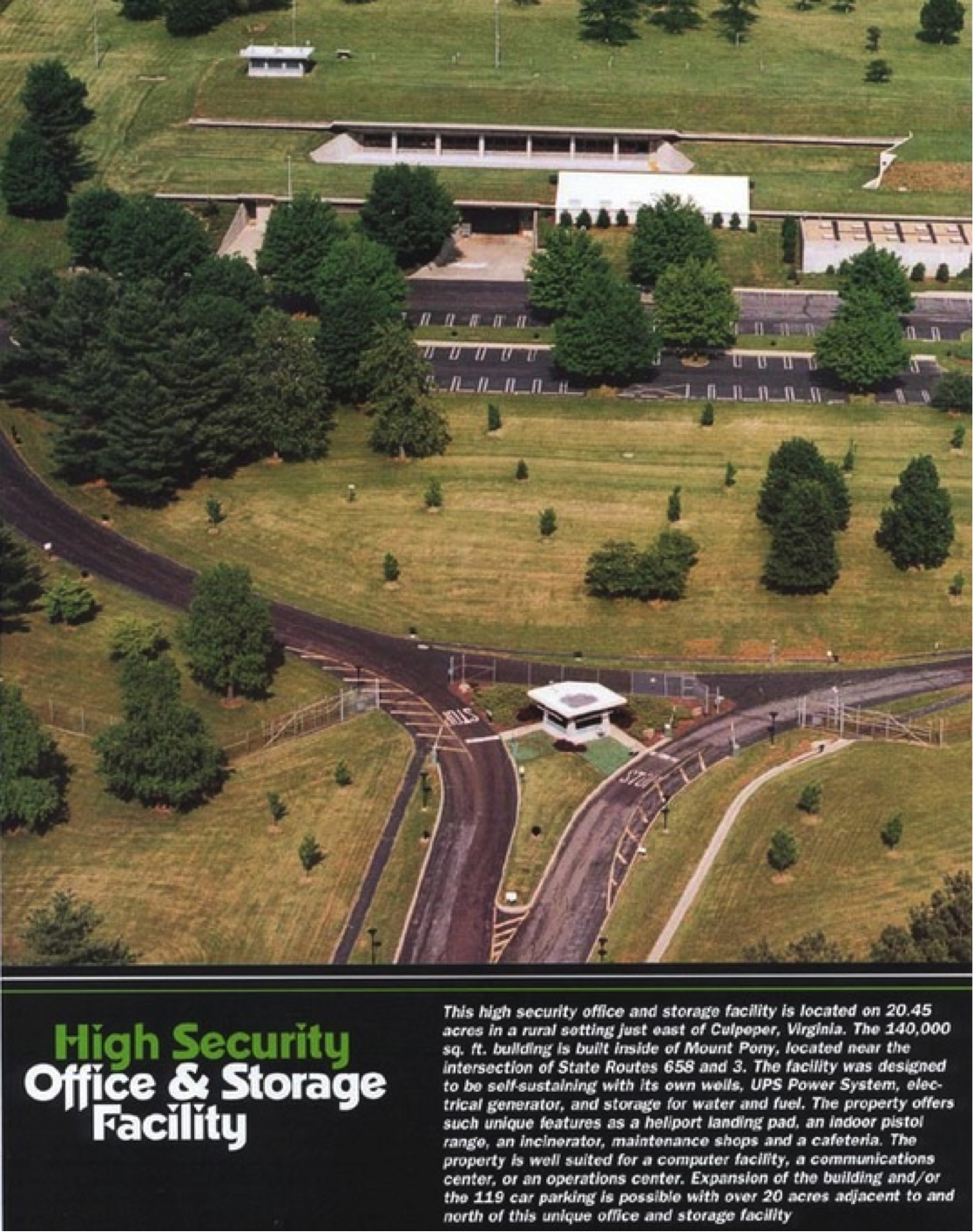
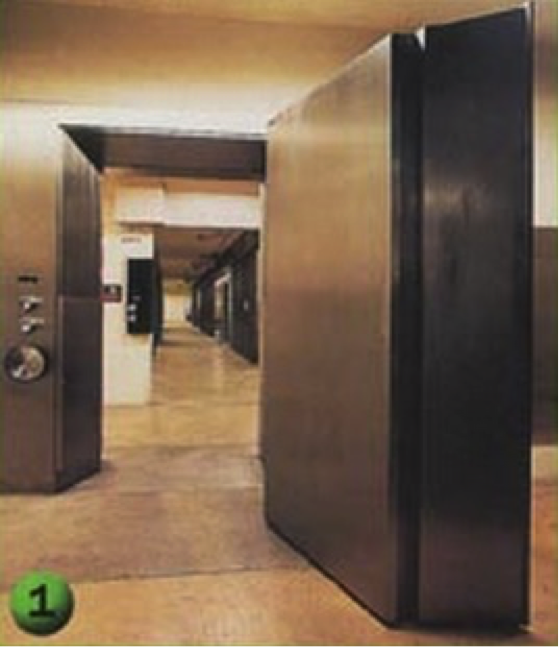
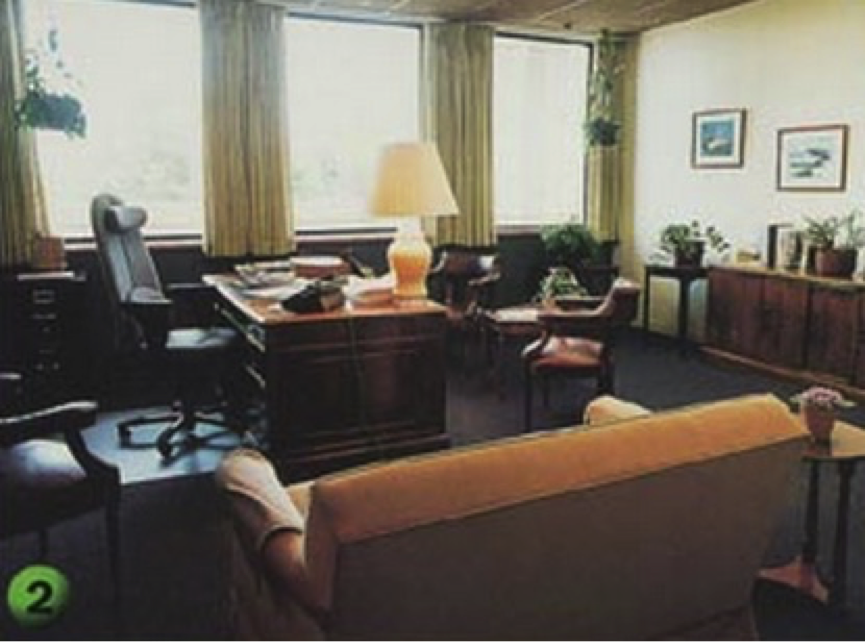
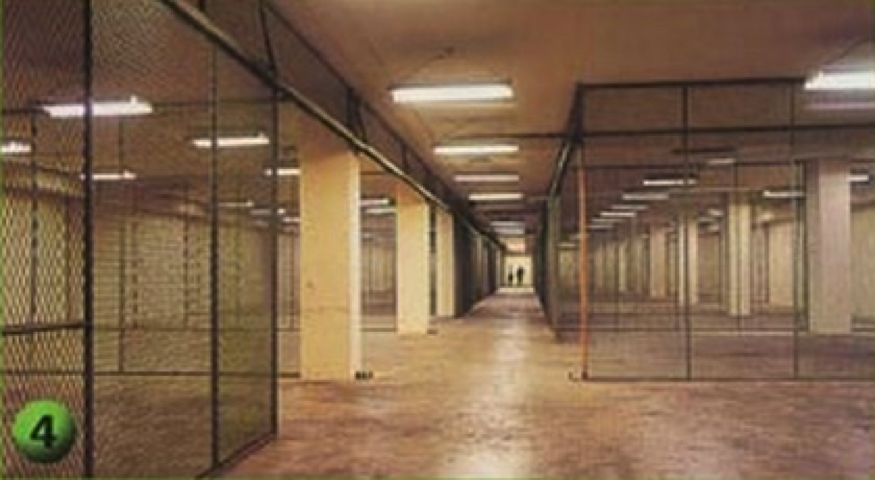
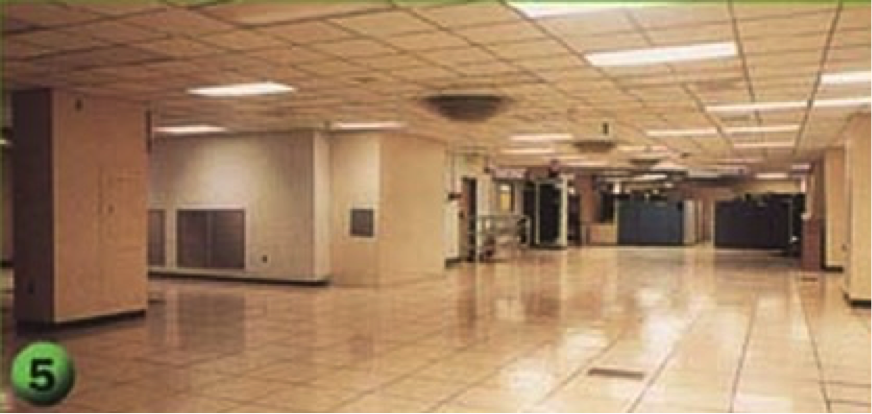
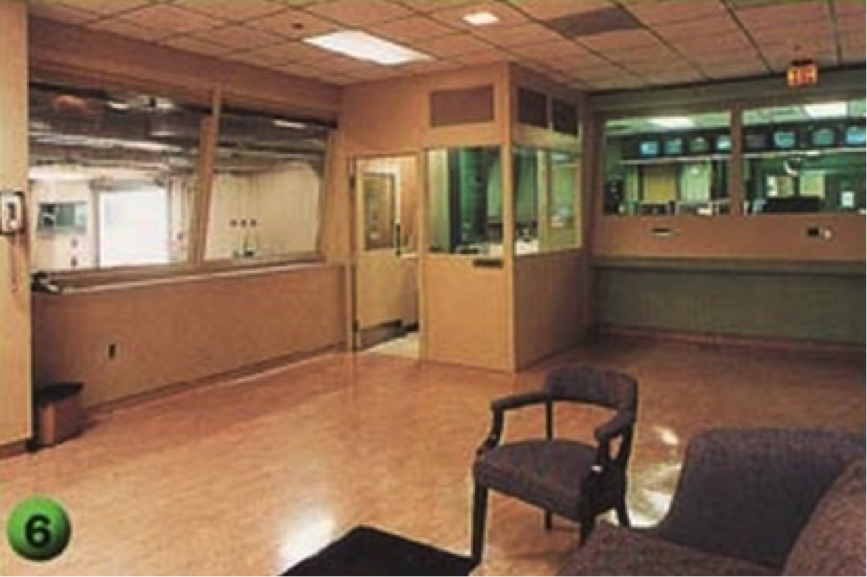
I wish I could have bought the place in 1992.
It is not cash under the mountain these days. The bunker holds “more than 1.1 million film, television, and video items… with a collection ranging from motion pictures made in the 1890s to today’s TV programs, the Library’s holdings are an unparalleled record of American and international creativity in moving images.”
Given the news from Iran and North Korea these days, I wouldn’t be a bit surprised that there is some bureaucrat, somewhere, re-inventing the wheel. The threat is not likely to be very accurate, at least at the beginning, and a hole in the ground may be the best way to see if peace will break out again after the nuclear exchange.
For all of us who live on the plain under the mountain, it is sort of comforting to know that it is there.
Copyright 2015 Vic Socotra
www.vicsocotra.com
Twitter: @jayare303
Dresses, Hats, Seersucker (and Horses)

(The first race takes the jump in front of the Big Ten Tent at University Row. Photo Socotra)
I was sitting next to K2 on the bus going out to Great Meadow for the Virginia Gold Cup. He has just returned from five weeks in Ukraine on behalf of the US Government, and he took the opportunity to give me a slide show presentation on the journey on his smart phone. The narrative was a little disjointed based on the decibels being pumped out of the sound system, which to the degree I could understand it, was current rap.
Our bus driver was slightly challenged, and directed her vehicle and charges toward the on-ramp to the District, which to my understanding is the diametric opposite to the proper way to get to The Plains on the other side of the Thoroughfare Gap.
We navigated around Arlington for a while, but Stacy, as we were informed her name was, eventually got us onto the interstate and headed west. The representative from University Row read us the obligatory administrative notes- that the buses would be gone by six-thirty and if you were not on one, you would have to find your own way to get home.
Then Stacy took the mike, to tell us sternly not to defecate in the rest room at the back of the bus. Or urinate.
“I didn’t drive this event last year, but two years ago the pee ran down the aisle and got all the way to me. That should mean something to the ladies in sandals.” The passengers gave off a collective “eye-ough” and then the music came up and K2 and I went back to talking about crystal production in the once and former Russian republic.
I won’t bother you with an account of the rest of the bus trip- there were another couple hiccoughs on the two-lane road to the event center, but nothing that was not solved admirably with a cold beverage upon arrival. The food was pedestrian but satisfying, and there was plenty of it to soak up the products dispensed by the open bars scattered around the University Row compound on the rail.

The First Race went off after the Jack Russell terrier steeplechase, which was conducted over on the Hill near the owner’s boxes. That is the perennial favorite, since the crowd is still relatively sober- there are about a hundred thousand fashionistas and much smaller cadre of horse racing fans in attendance around the rails to the emerald-sodded course.

The Rutherford Chase had a purse $25,000. The crowd was engaged in the action. It was 2 1/8 miles over National Fences. Jon-without got a round of drinks from the open bar and we moseyed over to the rail to watch. The knot of horses and riders approaching was exciting, and the crowd stood amazed at the power of the animals and grace of the riders as they cleared the jump and thundered off toward the turn to the home stretch.

The turf was soft, and Share Out with Ross Geraghty aboard ran off the pace in a tightly grouped field. He was still last as they thundered to the jump immediately in front of the t the stretch, but made a winning move and jumped the last with Mr. Starr’s Report. Share Out’s winning time was clocked at 5:20 3/5.

Second Race was the $25,000 Infinitive Steeplethon- 3 miles over the course’s dozen jumps and water. Saluda Sam with rider Willie McCarthy made won easily. This was his second win in the steeplethon, and the start of an excellent day for him.
Saluda ran the course in 6:18 and opened a four-length lead at the finish.
Saluda Sam with Paddy Young riding won the Third, the Hogan Lovells Cup, and then the crowd tensed for the fourth race, the Virginia Cup.
Actually, I am not sure anyone noticed. The first people who needed to take a little nap on the soft green grass were starting to go down, and I was thinking that an early bus back to Arlington might be a splendid idea. Jon suggested another drink might be the better answer, and I agreed to explore the idea with him.
The Fourth Race was the granddaddy of the series: the Virginia Cup. The purse was $75,000, and Willie McCarthy aboard Hot Rize took it. He had a great day, and so did the crowd. Willie kept Hot Rize near the rear of the field until the backside on the final time around the course. At this point, he launched a rally that propelled him close to leader Organisateur. Willie guided Hot Rize to catch the leader at the last fence and won in a thrilling stretch duel, winning by less than a length at the finish.
We took a break from the Row compound and wandered out to look at the other tents. We found my law firm’s enclosure and I took advantage of seeing my attorney to ask a non-billable legal question that probably would have cost me more than the ticket to the races, so it basically paid for itself.
Satisfied, we strolled back to the compound and got a traveler for the bus ride back to town. We wanted to make it back in time to catch the Kentucky Derby at Willow, and called ahead to let Old Jim and Chanteuse Mary know when the pack would be arriving.
We made it before the post, to universal relief. Sammy got a selfie of us as we hit the door, and Brett took good care of us once we were seated at the bar with a good view of the flat-screen. We had just enough to drink to cheer American Pharaoh on to victory in the 141st running of the Derby with jockey Victor Espinoza in the saddle. He won it in 2:03.02.
It was the fourth Derby win for American Pharaoh’s trainer, Bob Baffert, and the third Derby win for Espinoza, who won it for the second year in a row.
Race over, we recounted the events of the day. Mary and Jim were up for more, but I decided against one for the road, since there had been plenty of road already, and made my farewells. I stepped out into the lovely evening, straightened my straw hat and marched off toward home.
A great day, and a marvelous time was had by all. I think we may rent a party bus to attend the Fall International Cup that completes the racing season. We may want to use the restroom on the bus.
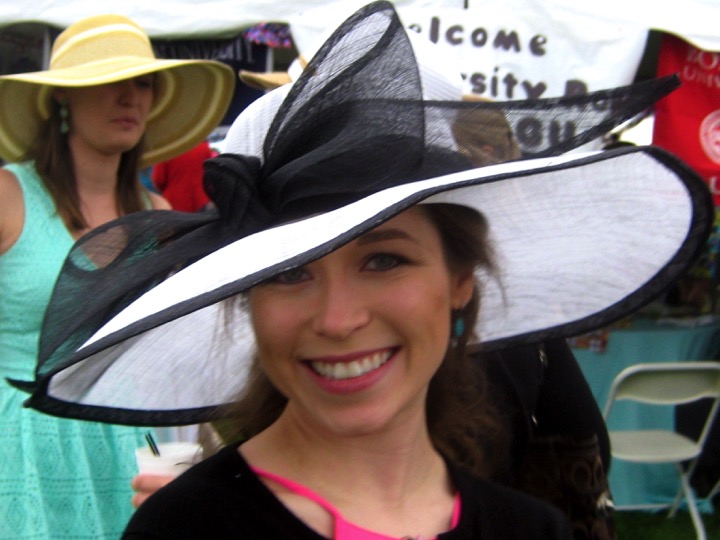
Copyright 2015 Vic Socotra
www.vicsocotra.com
Twitter: @jayare303
Race results courtesy Will and Kathleen O’Keefe, who were actually watching the ponies run.
© 2007-2015 Central Entry Office. All rights reserved.
Jim’s Favorite Pie

I am writing this on the 40th anniversary of the Fall of Saigon, one of the nadirs of a really bad decade that hadn’t even seen Jimmy Carter elected President yet.
I have to get along to the Gold Cup festival today at Great Meadow, so I am writing ahead a bit.
We were talking about pies the other night. It had got around to dessert topics, since Lovely Jamie had tucked into a sandwich before coming over and wanted to know what kind of cake Kate Jansen had produced for the evening meal.
Old Jim was expansive, and began a narrative about the pies of his life. His mother had been an awesome cook- his Dad was a pretty good chef as well, but his mom specialized in the best apple pie in the County, and won the gold medal at the Fair one year that came with a $100 prize.
That was when a c-note was something significant, and the accomplishment was documented in the Northhampton and Springfield papers.
His father specialized in a sort of hybrid lemon-cake pie with sweet-sour layer in the middle, but that got me thinking about key-lime and pecan pies, and the discussions rambled from there.
“My Mom never looked at a recipe,” declared Jim. “It got her in trouble one time. She was supposed to make three pumpkin pies for Thanksgiving. Woe betide any dog or bird that tried to get close to them as they cooled on the porch railing on the back of the house. Anyway, this time she got distracted by something and when the pies came out of the oven, she realized she had forgotten to include the eggs in the filling.”
“Complete waste, right?”
“You bet. The three pies went right into the sink. A complete write-off. She made three more, popped them in the oven, and when they were supposed to be done, she realized she had forgotten the eggs again.”
“Ouch. Bet she was out of all the ingredients except the eggs, right?”
“Yep. She yelled for me and my brother to go the store immediately. She was beside herself.”
Willow’s patio was buzzing with the glory of the Spring afternoon and Jasper and Sammy were bustling in and out the double doors serving the thirsty customers.
Ultimately, we covered all the pies, we could think of, including the cherry pies made from the uniquely succulent fruit grown in Leelanau County in Michigan’s northwest lower peninsula.
“So what was your favorite pie?” I asked, thinking of all of them in an endless line of shimmering caloric glory.
Jim smiled and leaned forward. “Prune.”
Never in my life would I have considered that my favorite pie, but if Jim likes it, I am prepared to give it a try. In the meantime, I need to go put on my seersucker suit, grab a suitable bow tie, slip on my white buck shoes and clap my straw hat on and go to the races at Great Meadow.
With luck, the gang will be back in time to walk over to Willow to watch the Kentucky Derby.
Jim’s Prune Pie
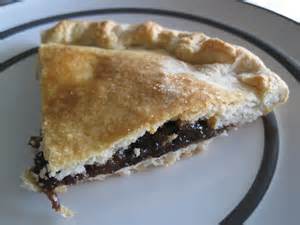
Ingredients :
1. 4 C flour
2. 1 1/4 C sugar
3. 1/4 tsp salt
4. 2 tsp baking powder
5. 1 C shortening
6. 1 1/2 lbs prunes, pitted (I used SunSweet Pitted Prunes – 18oz)
7. Pinch of ground cloves
8. 1/2 tsp. cinnamon
9. 10-15 Tbls. cold water
10.Milk
Directions :
1. Heat oven to 350 degrees F
2. Mix together flour, baking powder, salt and 1/2 cup of sugar
3. Cut in the shortening until the mixture is crumbly
4. Add enough cold water to make a soft dough
5. Knead slightly and cut in half
6. Roll out dough, 1/4 inch thick, and line cookie sheet with one
7. Cook prunes in water until soft, about 5-10 minutes, drain
8. Mash well, adding 3/4 cups of sugar (to taste, you may not need it all)
9. Season with cinnamon and cloves
10.Spread filling evenly over bottom crust
11.Roll out remaining dough, 1/4 inch thick
12.Cover with top crust pinch seams and cut steam vents
13.Lightly brush top of pie with milk and sprinkle with sugar
14.Bake until crust is slightly brown, approximately 30-40 minutes
Recipe courtesy of Val and Leo at http://valnleo.blogspot.com/2010/02/did-you-say-prune-pie.html
Hat Tip: JPeter
Story copyright 2015 Vic Socotra
www.vicscotra.com
Twitter: @jayare303
Loose Ends
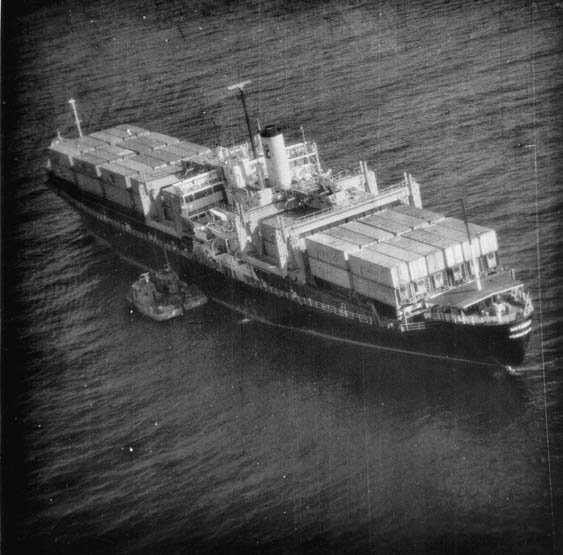
(Motor Vessel M/V Mayaguez at anchor after being seized in May, 1975, by the Khmer Rouge maritime forces. Photo USAF).
I was going to wrap up a brief commemoration of the end of the conflict that defined the mid-point of the American Century with an account of the Speech the Congressman made me give to the Chairman of the People’s Council of Ho Chi Minh City, an earnest smiling man named Pham Chanh Truc, in our visit on the avvicersary of the fall of Saigon in 1995.
It is a fun story, if you like awkward moments, but I realized in the exhange of notes yesterday that the story wasn’t really over. Loose ends, sort of like the single artillery shell that was fired from shore to land a hundred yards astern of the 7th Fleet flagship, USS Oklahoma City (CG-5). The shell was not intended to harm the flagship, but rather to extend the middle finger of peace that marked the last shot of the war.
But things were not over. There were a few loose ends that had to be raveled up. My pal Joe was in the Pentagon at the time, and he recalled the post-script to the conflict that cost millions of Vietnamese people their lives and livelihood, and the deaths of 58,000 young Americans. And defined the attitudes of my generation of young men subject to the draft, pro and con.
Joe was attempting to depict the new reality in the Western Pacific to the Navy’s leadership. He wrote: “Mayaguez was seized on Sunday night Washington Time. The Sunday night before I was in CNO IP putting the brief together the brief when I found a Foreign Broadcast Information Service (FBIS) report saying a German-owned merchant ship in the Gulf Thailand was threatened by unidentified pirates, but eluded them.”
I have to walk the cat back on the account for the previous week. Joe had planned on using the tid-bit in the Out-of-Area worldwide maritime portion of the previous Monday morning brief to the Chief of Naval Operations and his key staff, which was also packaged as the top-level intelligence update transmitted to ships and stations world-wide.
Since the FBIS report was open-source and unverified by National Technical Means or corroborating HUMINT, the item was deleted.
On Monday night, the watch team at the Fleet Ocean Surveillance Information Center at Makalapa Crater in Hawaii picked up the item and transmitted it in the daily Situation Report. The item was included in the CNO notes, but not formally presented in the Tuesday morning briefing.
Wednesday there is an report from Fort Meade about a merchant ship in the same general area of the German incident being attacked, but this time the reporting indicates the unidentified “pirates” are firing on the merchant ship. Again, the merchant escaped unharmed.
M/V Mayaguez was seized Sunday night, and the predicable “intelligence failure” is trotted out to absolve the operators from being asleep at the switch. There is a hunt for a scapegoat, which my pal dodged, and eventually collapsed on the Hydrographer of the Navy was issued a public letter of reprimand for failing to issue a NOTAM- “Notice to Mariners.”
The Mayaguez incident is covered nicely by our pal Mike Bohn, who transitioned from Naval Intelligence (and the White House Situation Room) to full-time journalism. His new book is titled “Presidents in Crisis,” and it is a good read.
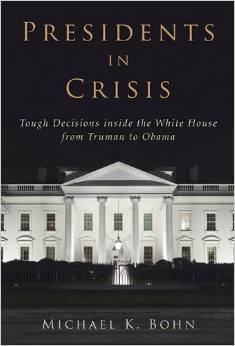
And it certainly was a crisis. The Mayaguez incident, occupied the footnote to the Vietnam War, and it was deadly. The response to the seizure of the merchant ship was the last official battle of the war in South East Asia, Another couple pals were there to have ring-side seats for it. We will revisit it all in the week of May 12th, when the action went down.
But remember: coincident with the collapse of South Vietnam, the Khmer Rouge had seized the Cambodian capital of Phnom Penh. The U.S.-backed Khmer Republic was overthrown, and the bloody reign of terror was just beginning. That is one of the legacies of the abdication of responsibility of the Americans. But we would pay a price for it anyway.
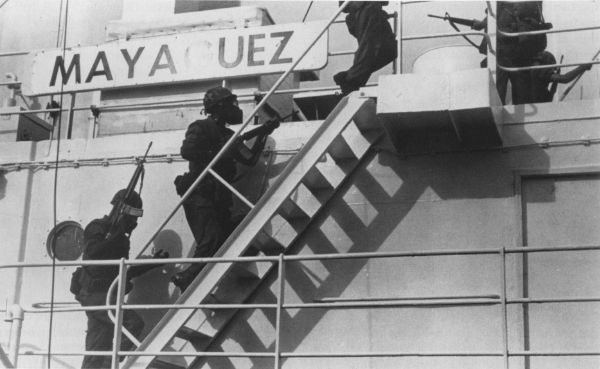
(Members of Company D, 1st Battalion, 4th Marines board the Mayaguez. Gas masks were worn because the ship was bombed with tear-gas canisters by USAF helicopters. Photo DoD).
In the rescue attempt to free the thirty-nine civilians who crewed the Mayaguez, eighteen Marines, Sailors and Airmen died. Fifty more were wounded. Twenty-three more USAF personnel died in a support force helicopter crash in Thailand due to mechanical failure. Three Marines, inadvertently left behind on Ko Tang Island in darkness and confusion, were executed and buried there within a few days by the Khmer Rouge.
The Cambodians released the crew and the ship, and might have even without the decisive response by President Ford. I will let Mike Bohn speak to that, but the accounts by my pals on USS Coral Sea (CV-43) are pretty amazing.
We will come back to that when the time is right. But 40 years ago this month, the American War in Southeast Asia was over.
For a while, anyway.
Copyright 2015 Vic Socotra
www.vicsocotra.com
Twitter: @jayare303
